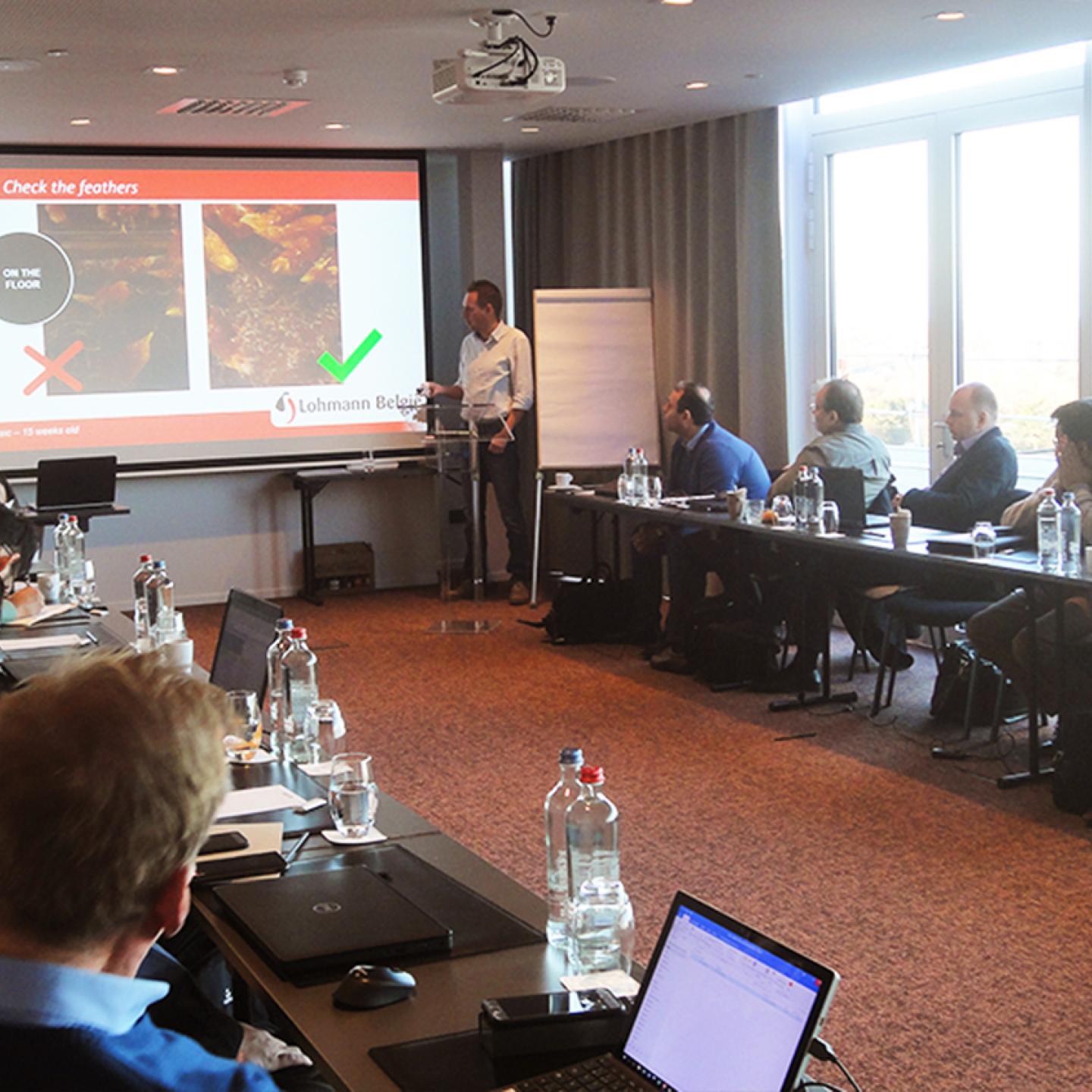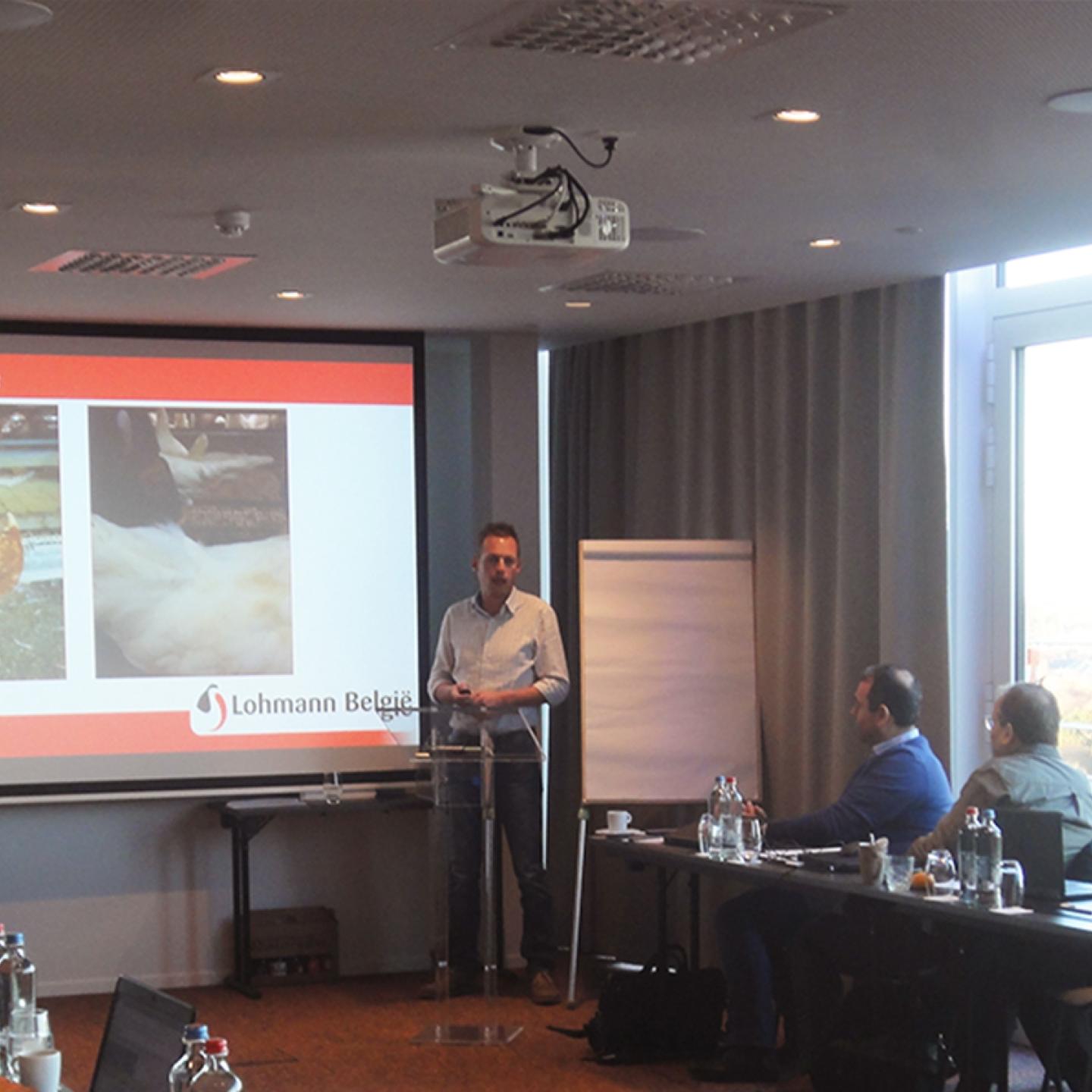Prevent feather pecking in commercial layers
Ces dernières années, le traitement du bec des animaux reproducteurs a fait l’objet d’un vaste débat au sein de Roxell. Dans ce contexte, il semble logique que la solution Natural Beak Smoothing figure dans notre programme de formation. L’organisation d’élevage et le fournisseur de poules Premium Poeljen België a accumulé de vastes connaissances sur le sujet. Ils distribuent des poules des races Lohmann, H&N et Hy-Line. Nous les avons invités à intervenir à l’occasion des « Training Days » organisés pour notre équipe commerciale.


The speaker was Dr. Sebastiaan Van Hoorebeke, who is an expert on this subject at Premium Poeljen. Sebastiaan advises poultry farmers of commercial layers and hatcheries in Western Europe. He is taking around his presentation "management tricks for the hen of the future". He also wants to help farmers cope with a changing market in which animal welfare is becoming increasingly important.
For instance, a ban was very recently introduced on beak treatments for commercial layers in some countries. Irrespective of the legislation, retailers around the world are also increasingly adapting their standards for eggs. "Animal-friendly" has become an important label.
"In the past, hatcheries usually had the tips of their beaks treated. That changed in 2018. It was a transition that happened fairly quickly for most farmers. Concerns about feather pecking and cannibalism among chickens were again very real. These behavioral problems occur in both intensive poultry farming and hobby farming. Nevertheless, we now are able to identify a number of factors that influence pecking behavior.
Sebastian's presentation revealed 4 potential key issues, which may prevent feather pecking among commercial layers, namely a mix of monitoring the particle size of the feed, light management, intestinal health and enrichment material.
Effect of the feeding system
It is often said that hens with sharp and non-treated beaks eat more. This could not be further from the truth. In actual fact, more feed is wasted. This was shown in research by the breeding firm Premium Poeljen. Up to 3g of feed per hen can be wasted each day. You can see the residual feed lying on the ground in houses that use a chain feeder as a feeding system.
Furthermore previous research by ABZ Diervoeding showed that more selective feed intake occurs with the chain feeder. An unbalanced feed composition was a further factor that influenced cannibalism. According to the same research by ABZ Diervoeding, auger feeding systems offer an answer. Selective feed intake is less significant in these systems – or almost non-existent.
Light management for lower stress
Sebastiaan recommends choosing a homogeneous light intensity throughout the house. This means that dominant and less dominant hens have no reason to look for dark or light places. On the contrary, the hens even move around the house more when the lighting is consistent. This reduces the possibility of boredom or stress. The color and temperature of the light can also make a difference.
In short, it is better to prevent feather pecking, as it is not easy to cure. It is all about observation, experimentation and finding the right balance.
Thanks for the interesting presentation during our Training Days, Sebastiaan.
